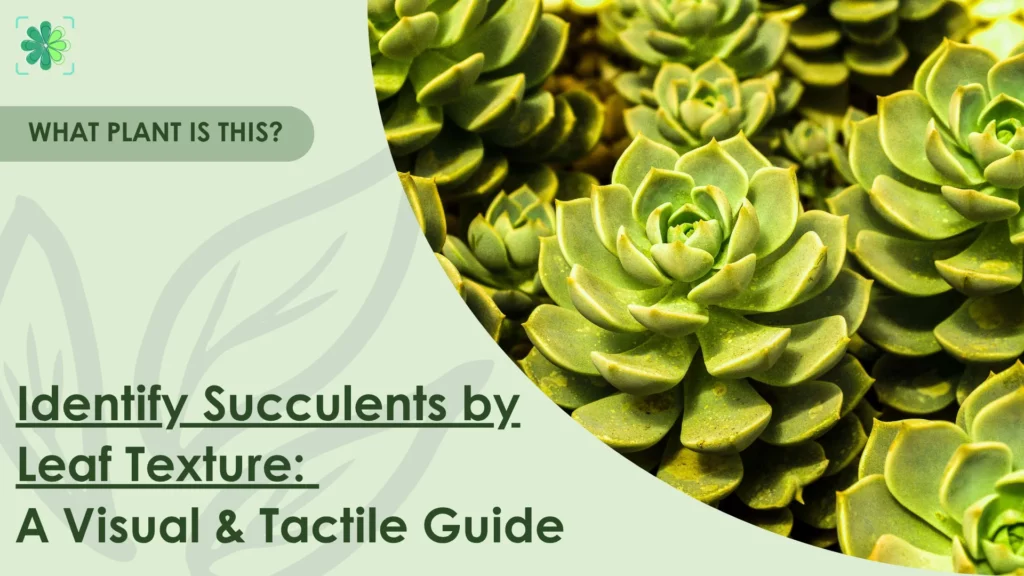
Leaf texture can tell you a lot about a succulent’s identity and how to care for it. In this guide, you’ll learn how to identify succulents by leaf texture using simple touch and visual clues. From fuzzy to glossy to powdery surfaces, each texture gives away clues about the plant’s species, water needs, and sun tolerance. Whether you’re a beginner or a curious plant lover, this article will help you spot key features and avoid common mix-ups.
Why Leaf Texture Is a Key Identifier?
While color can fade or shift with sunlight and stress, and size changes as the plant grows, texture usually stays the same. That makes it a more dependable clue than shape or color. Texture also reveals how a plant survives in its natural habitat:
- Fuzzy or hairy leaves help trap moisture and block sunlight, creating a humid layer around their surfaces.
- Waxy or glossy surfaces and thick cuticles are common in succulents like Agave and Dudleya. These reduce water loss and withstand intense sunlight.
- Powdery or chalky coatings reflect harmful UV light (e.g, Dudleya brittonii, known for its highly reflective surface).
- Thick, fleshy leaves store water in specialized cells, enabling the plant to survive long dry spells. Anatomical studies of Echeveria reveal a thicker epidermis and wax layers, which are linked to drought resistance.
Common Succulent Leaf Textures and What They Mean
One of the easiest ways to identify succulents by leaf texture is to feel their surfaces and observe how they interact with light. Below are the most common textures you’ll come across, along with examples, care tips, and how to recognize them.
Fuzzy or Hairy Succulents
These succulents have leaves that feel soft and slightly fuzzy, often with tiny hairs that give them a velvety appearance. The fuzz isn’t just for looks. It acts like a natural sunscreen, trapping moisture and reflecting harsh light.
- Examples: Kalanchoe tomentosa (Panda Plant), Echeveria pulidonis
- How to recognize: Feel the leaf gently. If it’s soft and a little dusty to the touch, with a gray-green color, it likely belongs to the fuzzy succulents group.
- Care tip: These plants do best with bright but indirect sunlight. Too much direct exposure can burn their sensitive, hairy surfaces.
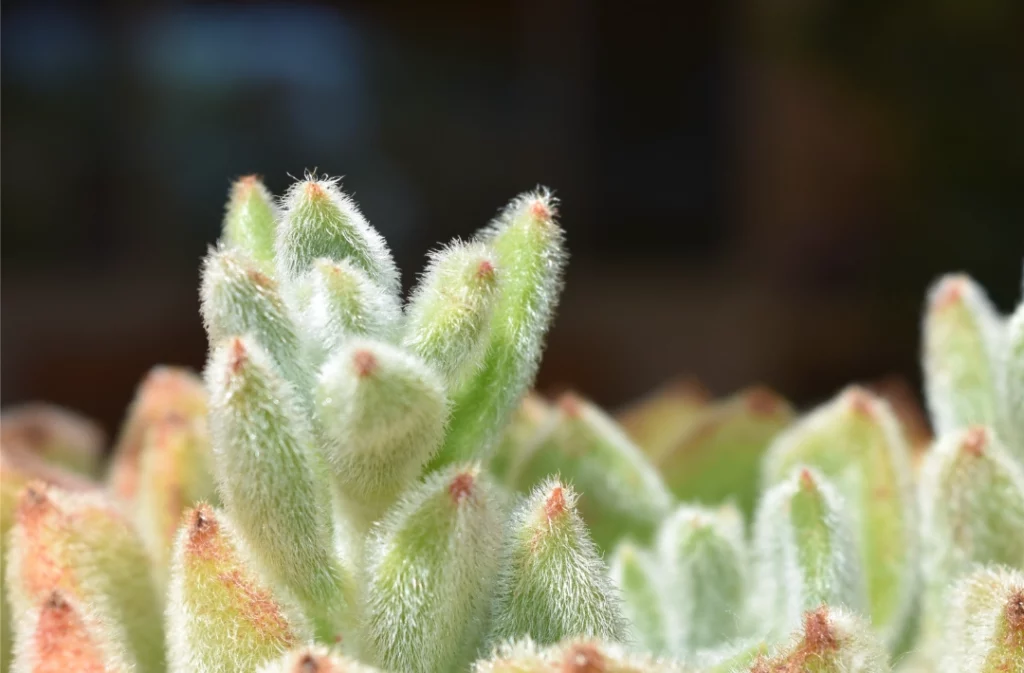
Smooth or Glossy Succulents
Smooth or shiny succulents have leaves that look polished and feel slick. This glossiness typically results from a natural wax layer that helps reduce water loss, a characteristic common in desert-adapted plants.
- Examples: Haworthia fasciata, Echeveria elegans
- How to recognize: Rub a finger gently across the leaf surface. If it feels slick or has a light-reflecting shine, you’re likely handling a glossy leaf succulent.
- Care tip: These succulents are highly drought-tolerant and can handle bright light. Just avoid overwatering, as their waxy layer already helps them conserve moisture.
If you want to identify succulents by leaf texture without guessing, shine a light on the plant. Glossy species often reflect it like polished stone.

Powdery or Coated Leaves
Many succulents develop a whitish or bluish coating called epicuticular wax. This powder acts like sunscreen, helping the plant reflect UV rays and survive in full sun. It also gives the leaves a matte or chalky appearance.
- Examples: Graptoveria, Dudleya, Sedum clavatum
- How to recognize: Look closely for a soft, dusty layer. Don’t rub it off. It’s part of the plant’s protection. Leaves may appear silvery, light blue, or pale green.
- Care tip: These plants thrive in intense light but still require some protection from the hottest afternoon sun. Avoid touching the surface too much, as removing the wax exposes the plant to stress.
Among all textures, powdery leaves are one of the most evident signs when trying to identify succulents by leaf texture, especially in sun-exposed varieties.
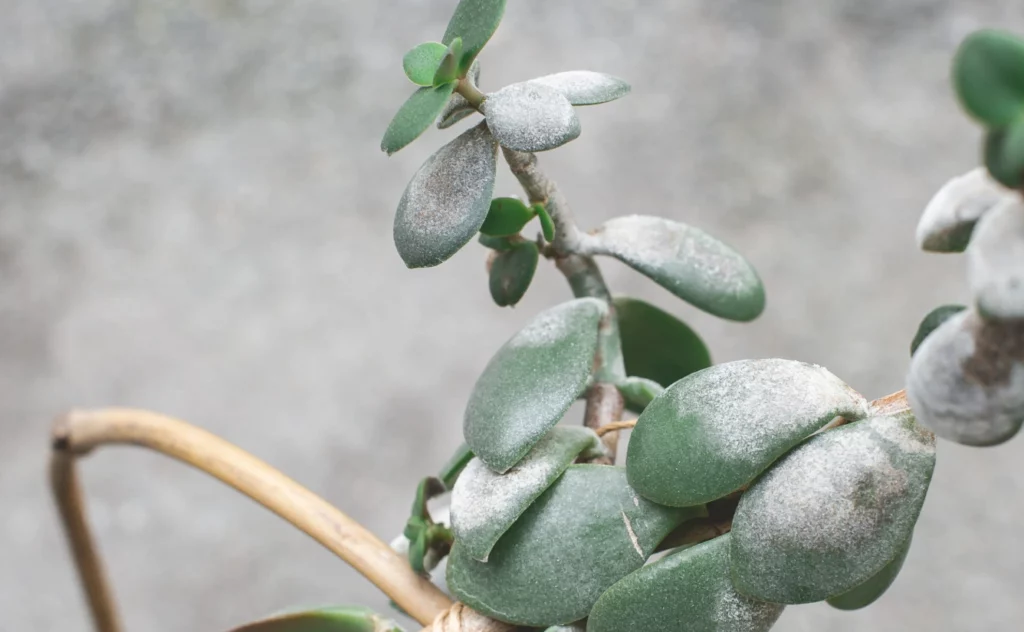
Thick and Fleshy Leaves
These are the classic water-storing succulents. Their leaves are thick, juicy, and often rounded or paddle-shaped. The fleshiness allows them to hold water for long periods, making them ideal for dry indoor conditions.
- Examples: Aloe vera, Kalanchoe luciae, Crassula ovata
- How to recognize: Gently press the leaf. It should feel firm but bouncy, like pushing on a grape. If it snaps cleanly or oozes, it’s storing a lot of liquid.
- Care tip: Since these plants store water in their leaves, they don’t need frequent watering. Wait until the soil is arid.
This group may appear simple, but its texture reveals a great deal about drought adaptation. When you’re learning how to recognize succulent types, this is one of the easiest to spot.
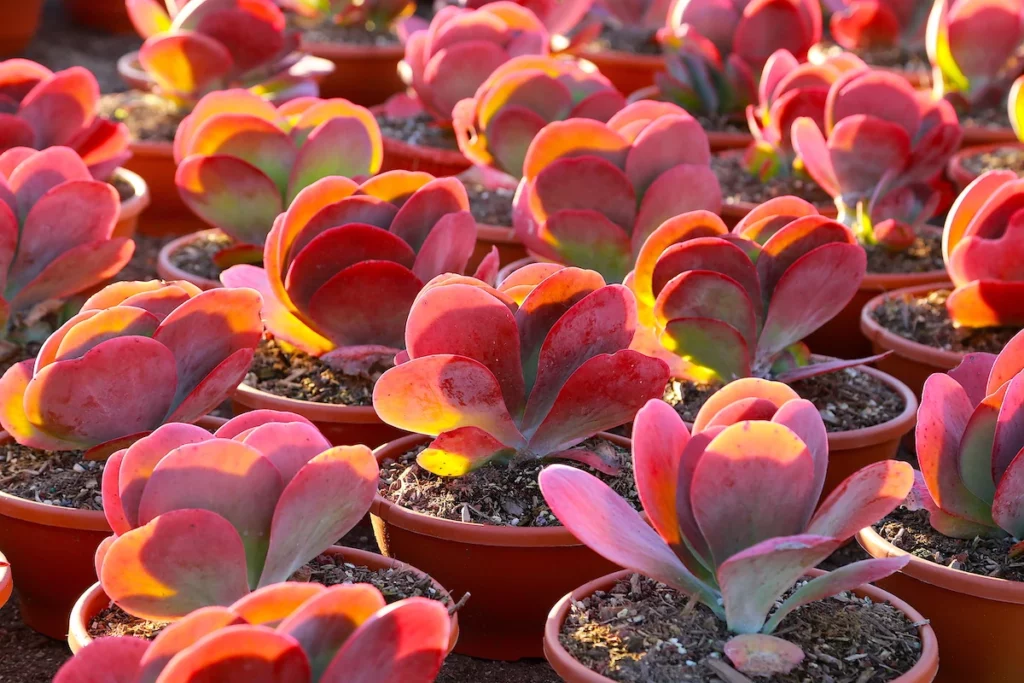
Spiky, Serrated, or Firm Leaves
These succulents have a tougher, sometimes more aggressive appearance. Their leaves are often edged, ridged, or pointed, features that have evolved to protect the plant from predators or to reduce leaf area and minimize moisture loss.
- Examples: Agave americana, Aloe brevifolia
- How to recognize: Feel the edges and the tip of the leaf. Spiky species often have firm, sharp outlines or tiny teeth along the sides.
- Care tip: These hardy plants enjoy full sun and are well-suited for outdoor containers or rock gardens. Their stiff structure helps them thrive in rougher environments.
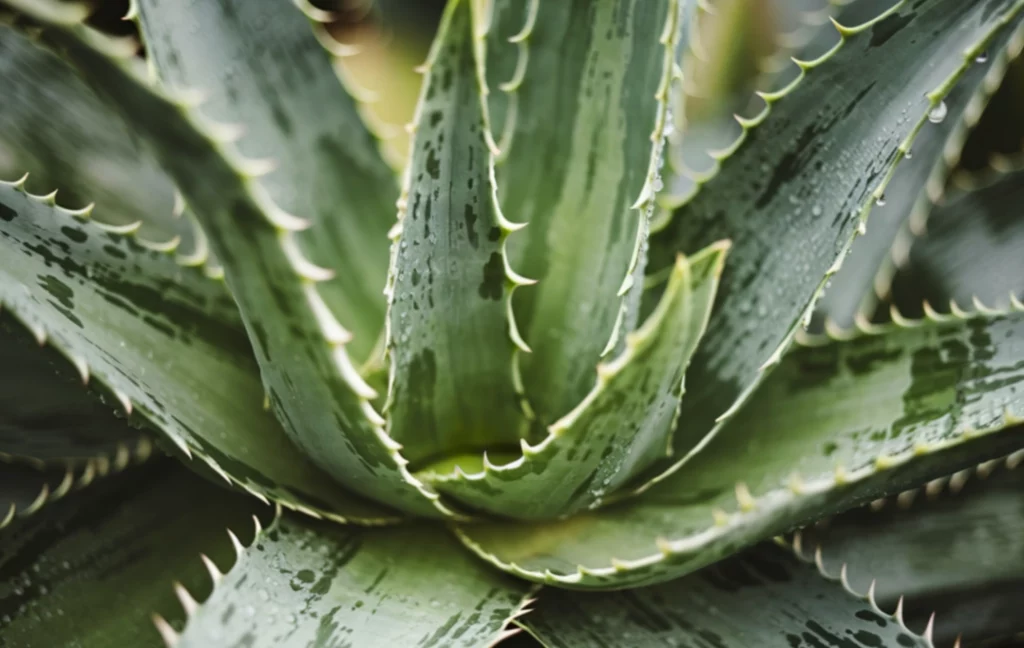
Succulent Leaf Texture Identification Chart for Quick Reference
| Texture | Feel | Example Succulents | ID Tip |
| Fuzzy / Velvety | Soft, hairy | Kalanchoe tomentosa, Echeveria pulidonis | Stroke gently. Look for tiny hairs and muted, gray-green tone. |
| Glossy / Waxy | Smooth, slick | Haworthia fasciata, Echeveria elegans | Reflects light. Rub lightly to feel waxy coating. |
| Powdery / Chalky | Dry, dusty | Graptoveria, Dudleya, Sedum clavatum | Look for bluish-white layer. Don’t rub off the coating. |
| Fleshy / Thick | Plump, juicy | Aloe vera, Crassula ovata, Kalanchoe luciae | Gently press for firmness. Leaves should feel full and springy. |
| Spiky / Firm | Stiff, edged | Agave americana, Aloe brevifolia | Inspect leaf edges. Feel for serration or sharpness. |
Step-by-Step: How to Identify Succulents by Leaf Texture
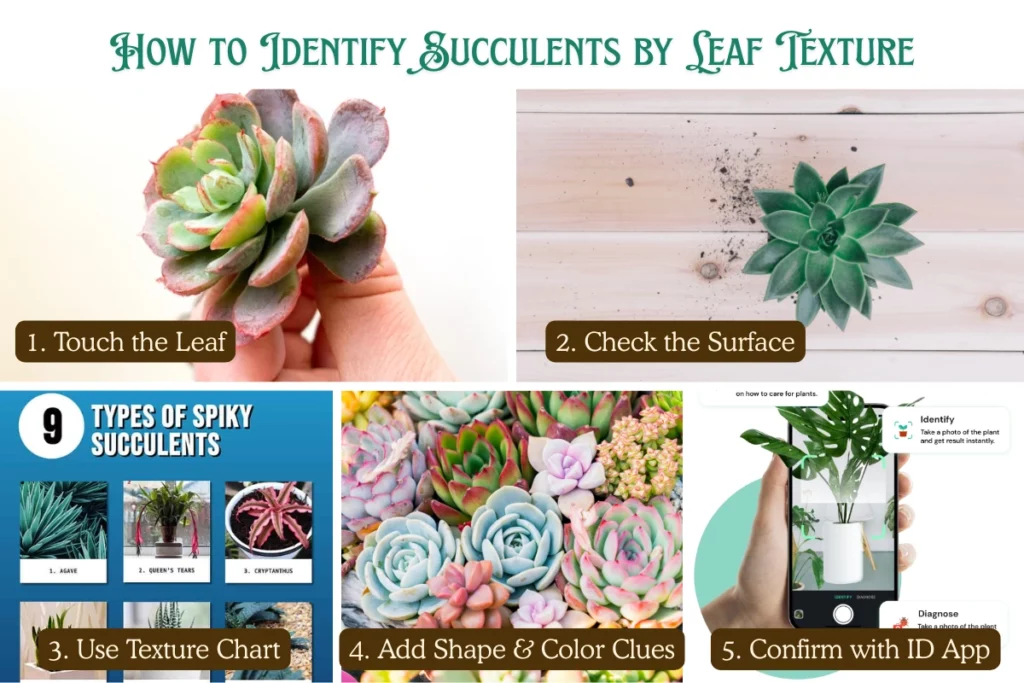
Step 1: Touch the leaves with clean, dry fingers
The first thing to do is feel the leaf surface. Is it soft and fuzzy? Smooth and waxy? Thick and spongy? Or stiff and edged like a saw blade? Texture is often one of the easiest ways to identify succulents by leaf texture, especially when flowers aren’t present. Be gentle, as some surfaces, such as powdery coatings, are delicate and can be easily rubbed off.
Step 2: Look closely at the surface in natural light
After touching the leaf, take a closer look. Do you see a fine layer of white or blue dust? That usually points to powdery-leaf succulents, such as Dudleya. If it’s shiny, you’re likely looking at a waxy type like Haworthia.
If there are tiny hairs or a velvety feel, it could be a fuzzy-leaf plant, such as Kalanchoe tomentosa. These surface clues help you visually confirm what your fingers noticed and are essential when you want to identify succulents by leaf texture quickly and confidently.
Step 3: Use a texture comparison chart or a plant ID app
A texture chart (like the one above) will help you match the texture you felt (fuzzy, smooth, chalky, or firm) to the actual plant types. If you’re using a plant identification app like Planteyes, make sure your photo captures the texture clearly. Many successful IDs happen when you focus not just on shape, but also on surface quality — one of the most valuable ways to identify succulents by leaf texture.
Step 4: Add in extra details like leaf shape or color
Texture gives you a strong start, but pairing it with other traits helps narrow it down even further. For example, if two succulents both have thick, fleshy leaves, one may form a tight rosette while another grows in trailing stems. Take note of:
- Overall plant shape
- Leaf color (solid, bluish, variegated?)
- Leaf edge (smooth vs. toothed)
These secondary features help confirm your ID and reduce confusion between similar-looking species.
Step 5: Ask for confirmation if you’re still unsure
If you’re stuck between two lookalikes, upload your findings, including texture details, to a plant community forum or app. Mention what you felt and saw (e.g., “thick leaves with bluish powder and soft tips”) to get more accurate feedback. Sharing clear info helps others identify succulents by leaf texture on your behalf or confirm your guess.
Conclusion
Hope this detailed guide will help you identify succulents by leaf texture with more ease and confidence. It’s one of the simplest ways to tell similar plants apart. And if you’re ever unsure, the Planteyes app is a great backup to confirm your guess.
FAQs
Can I rely on texture alone to identify a succulent?
Texture is a strong clue, but it works best when combined with other traits like leaf shape, color, and growth pattern. Use texture to narrow down options, then confirm with additional details or a plant ID app.
Why do some succulents feel dusty or chalky?
That powdery layer is called epicuticular wax. It helps the plant reflect sunlight and reduce water loss. It’s also a key texture trait for identifying species like Dudleya and Graptoveria.
Can two succulents have the same texture but be different species?
Absolutely. Texture helps you group similar types, but it doesn’t always tell you the exact species. That’s why comparing other traits and using tools like Planteyes is essential.
What’s the best lighting to check leaf texture?
Natural daylight is best. It helps reveal surface details, such as shine, hairs, or powder, that might not show up well under artificial light.


